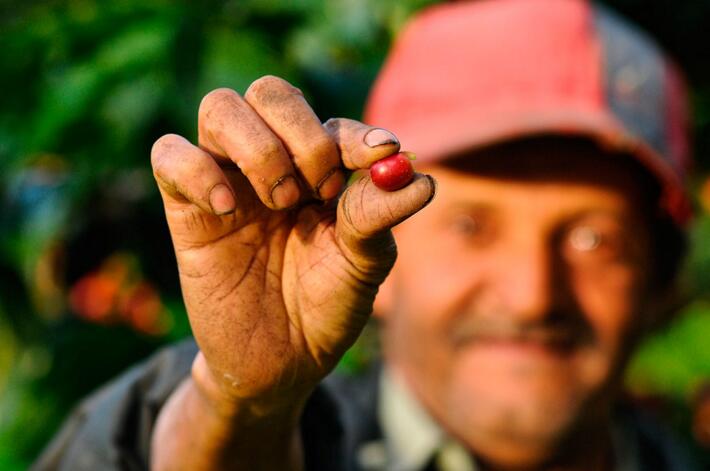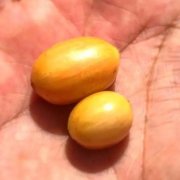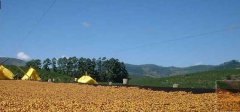Where is the secret of delicious Maracaturra beans, Nicaraguan Maracatula coffee beans?
Starbucks uses Nicaragua maracatula coffee beans that are more specialized than usual Nicaraguan coffee beans.

Well, in the grand scheme of things, I realized they were still small. But the Maracaturra variety is a big problem in the coffee world. Let me explain.
Like Malbec and Honeycrisp apples, my personal favorites, there are many different kinds of coffee. Arabica and Robusta are the two most common types of coffee in the coffee tree, accounting for almost all coffee production worldwide. (At Starbucks, we only buy 100 percent Arabica coffee.) single
There are several hundred subspecies of Arabica coffee, commonly referred to as grape varieties. When it comes to flavor, size, color, productivity and resistance to disease, they each have unique qualities. Perhaps you've heard of the outstanding geisha variety or bourbon, one of the oldest varieties.

Commonly found in Nicaragua and El Salvador, the Malacatera is a hybrid variety. This is a crossover point between Caturra, known for its productivity and balanced taste, and Maragopipe, a high-quality coffee known as the "elephant bean."
There are soybeans, a low-yielding variety of coffee. The crossover with Katula is for higher productivity and better quality,"said Carlos Mario Rodriguez, Starbucks Global Agronomy Director.
Perhaps as amazing as the size of the Maracaturra beans is the complex flavor of coffee. As you sip, you can pick out many unique, delicious flavors.
This is proof of bean size. The bigger the beans, the stronger the flavor.
- Abigail Crown

Starbucks Green Coffee Quality Manager
Only a handful of farmers grow Malakatura, which is a rarity. One reason: breeding this breed comes with considerable responsibility. This is a fragile plant that is susceptible to coffee rust, a destructive fungus that attacks coffee tree leaves.
"Farmers have to spend extra time and resources to control this fungal disease," Carlos Mario said.
Carlos? Carlos Mario says it is also less productive than other common varieties. This means that the Malacatera tree does not produce as many coffee cherries per season, posing additional challenges for farmers.
Luis Emilio Balladrez (center) with his two sons.
Luis Emilio Balladrez (center) with his two sons.
At his Buenos Aires farm in Dipilto, Nicaragua, Luis Emilio Valladarez is well aware of the challenges and rewards that Maracaturra brings. With the help of his two sons, he has been growing this grape variety ever since he received some Malacatera seeds as gifts from friends.
In turn, his coffee has become something we like to keep through Starbucks. Plan to share gifts.
"By buying this coffee that's full of flavor and emphasizing it in this particular way…I think that's enough in itself to inspire people to say it's worth it, rather than pulling out trees and replacing them with something more reliable," Abigail said.
Now we offer us from Luis Emilio-Starbucks Reserve? Nicaragua's newest coffee in Malacatera. Abigail says the sweetness of red apple, spiced flavor and a hint of vanilla are the perfect combination for coffee.
"It's one of those really exciting coffees to have with other people because everyone picks something unique first." But as you continue to drink, you can come and see all the flavors and how they fit together,"Abigail said.
As you enjoy this coffee, we hope the large flavors and soy remind you of the amount of love and care required to produce Maracaturra.
Important Notice :
前街咖啡 FrontStreet Coffee has moved to new addredd:
FrontStreet Coffee Address: 315,Donghua East Road,GuangZhou
Tel:020 38364473
- Prev

What is the uniqueness of Starbucks Maracaturra coffee beans?
The Nicaraguan Maracatula coffee beans used by Starbucks are bigger than the usual Nicaraguan coffee beans. Well, in the grand plan of things, I realized they were still very
- Next

Fine African coffee has an in-depth understanding of the flavor changes of various coffee producing areas in Africa.
When it comes to Africa, people's first impressions are: desert, drought, tribe, poverty, mystery and so on. Because of its climatic environment, it has become a paradise for the growth of coffee trees. Coffee production in Africa the first coffee tree in the world was found in the Horn of Africa. Local indigenous tribes often grind the fruit of coffee and knead it with animal fat to make many balls.
Related
- What documents do you need to go through to open a coffee shop? coffee shop coffee shop certificate processing process
- How to purchase Coffee beans in small Cafe how to choose a suitable supplier for domestic Coffee supply Company
- How to drink Starbucks Fragrance White Coffee? how to make Australian White Coffee? what Italian coffee beans are recommended?
- The Story of Flora Coffee: the name of Flora Coffee Bean and the implication of the Flowers on Florna Coffee
- How much does a cup of coffee cost? How much is the profit of a cup of coffee? What is the profit of the coffee shop in a year?
- Yunnan small Coffee, known as "fragrant Coffee", introduces the characteristics of Alpine Arabica Coffee producing areas in Yunnan, China
- 2023 latest Starbucks full menu price list how much is a cup of Starbucks coffee what is better to drink the most popular hot and cold drinks recommended
- Starbucks different kinds of Coffee Price list Starbucks menu 2023 Top Ten Best drinks in Starbucks
- Starbucks Spring praise Comprehensive matching Coffee Bean theme Story Packaging implication and taste description
- The cost of a cup of coffee latte American coffee cost price and selling price

